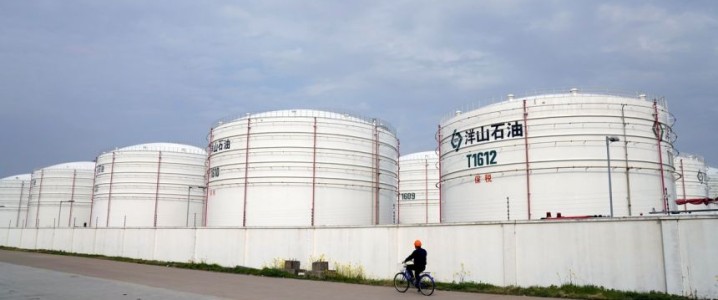
The United States has announced a new wave of sanctions targeting China as part of its broader strategy to reduce Iran’s nuclear capabilities and destabilizing influence in the Middle East. The move aims to severely limit Iran’s ability to fund its nuclear program, focusing on the crucial role of the Islamic Revolutionary Guard Corps (IRGC) in this effort. The U.S. intends to minimize Iran’s oil exports, which are at the core of its financing.
In recent weeks, Washington has identified China as a significant enabler of Iran’s oil trade, given that it is the largest importer of Iranian crude. According to a senior legal source familiar with U.S. sanctions, the objective is to “put Beijing back in its box” regarding its dealings with Iran and the broader Middle East. This statement reflects the U.S. commitment to countering China’s influence in the region.
The U.S. has ramped up its sanctions, targeting entities like the Zhoushan Jinrun Petroleum Transfer Co., which was accused of engaging in significant transactions involving Iranian oil. This facility is the fourth Chinese port to face sanctions from the U.S. in recent months, following similar actions against Huaying Huizhou Daya Bay Petrochemical Terminal, Guangsha Zhoushan, and Dongying Port. U.S. officials emphasized that these sanctions are designed to disrupt the flow of revenue that the Iranian regime uses to support terrorism and oppress its citizens.
Historical Context of Sanctions
The U.S. has a long history of sanctioning Iran, particularly following its withdrawal from the Joint Comprehensive Plan of Action (JCPOA) in 2018. At that time, the U.S. aimed to cut Iran’s oil exports to zero, which were approximately 2.5 million barrels per day (bpd). However, despite the sanctions, China continued to purchase Iranian oil, reportedly importing nearly 1 million bpd as of mid-2019. The increase in Chinese imports was attributed to discounts on Iranian oil and the strategic benefits outlined in the long-term “Iran-China 25-Year Comprehensive Cooperation Agreement.”
Recent data from China’s General Administration of Customs (GAC) shows discrepancies in reported oil imports, indicating that significant volumes of Iranian oil may have bypassed official channels. Analysts suggest that unrecorded imports, potentially in the millions of barrels, were used to supply China’s Strategic Petroleum Reserve, complicating the U.S.’s ability to monitor and enforce sanctions effectively.
Moreover, China has demonstrated a willingness to navigate U.S. sanctions by establishing special purpose vehicles for its oil transactions with Iran. The Bank of Kunlun, a key financial institution for these operations, has previously facilitated billions of dollars in oil imports while remaining largely unaffected by U.S. sanctions.
Recent Actions and Future Implications
The U.S. has taken additional steps to tighten its sanctions framework, focusing not only on Iran but also on its regional allies. Legislation such as the proposed “No Iranian Energy Act” aims to sanction Iranian natural gas imports to Iraq, which historically account for around 40% of the country’s energy needs. This multifaceted approach underscores the U.S. intention to disrupt Iran’s energy supply chains and weaken its influence in the region.
In December 2023, the U.S. Department of the Treasury’s Office of Foreign Assets Control (OFAC) sanctioned various individuals and entities linked to Iran’s military and financial networks. This included firms in Hong Kong suspected of facilitating trade with Iran. The U.S. strategy reflects a balance between exerting pressure on Iran and managing its relationship with China, particularly in the context of geopolitical tensions such as the ongoing Israel-Hamas conflict.
As the U.S. continues to refine its sanctions methodology, it remains to be seen how effective these measures will be in curtailing Iranian oil exports and diminishing the role of China as a key supporter of Iran’s economy. The unfolding situation will likely require ongoing monitoring and adjustments to U.S. policy to adapt to the evolving dynamics in the Middle East and beyond.






